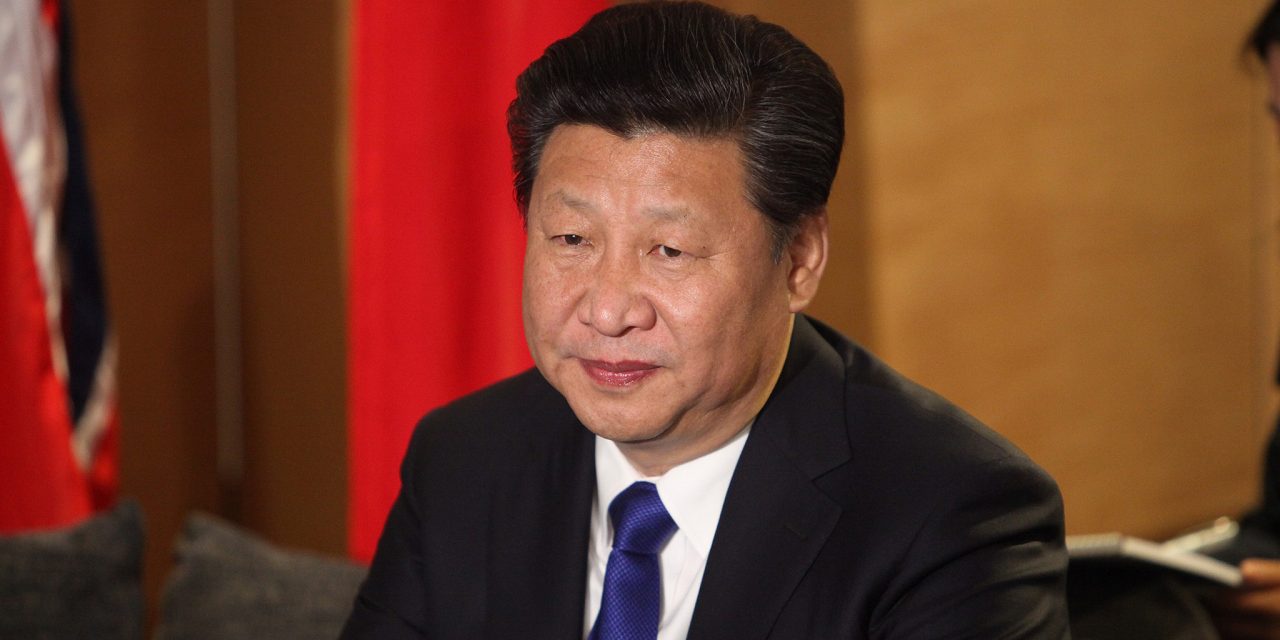Source: China Media Project (12/30/18)
CHINA DISCOURSE REPORT 2018
by Qian Gang
For 2018, we could say that the most important testing point (测试点) in China’s political discourse arena was the contraction of President Xi Jinping’s political “banner term,” or qizhiyu (旗帜语), “Xi Jinping Thought of Socialism With Chinese Characteristics for a New Era” (习近平中国特色社会主义思想), which was formally introduced at the 19th National Congress of the Chinese Communist Party in November 2017.
What do I mean by contraction?
This long and unwieldy political phrase is meant to be Xi Jinping’s political brand, forming and consolidating his legacy, and it is set apart from the banner terms of Xi’s predecessors, Hu Jintao and Jiang Zemin, by including his name, an important mark of Xi Jinping’s power. But to become a phrase on par with previous legacy phrases like Mao Zedong Thought (毛泽东思想) or Deng Xiaoping Theory (邓小平理论), both of which “crown” (冠名) top Party leaders, this latest banner term would need to undergo a process of contraction. And of course the contraction we should expect is “Xi Jinping Thought,” which was strategically imbedded in the expanded “Xi Jinping Thought of Socialism With Chinese Characteristics for a New Era.”
We have to assume, given the nature and role of political discourse within the Party’s political culture, that this was the intention all along — that “Xi Jinping Thought of Socialism With Chinese Characteristics for a New Era” was introduced with a mind to reducing it down as soon as the conditions were right.
The pace of this contraction process is a reflection of the degree of power wielded by Xi Jinping and the core of top Party leaders at his side. At CMP, we predicted previously, as Xi Jinping’s banner term became clear, that the contracted “Xi Jinping Thought” would emerge within the year following the 19th National Congress. In fact, we could see the process unfolding in the Party-state media, with the emergence of a number of transitional phrases (过渡性提法), but this process was ultimately slower than we anticipated, impacted by the broader domestic and international environment.
We’ll come back to this question of banner terms at the end of this report.
When the National Language Resources Monitoring and Research Centre for Print Media (国家语言资源监测与研究中心) at Beijing Language and Culture University released its list of “Top Ten Terms in the Chinese Media” for 2018 on December 24, these included “constitutional amendment” (宪法修正案) and “trade tensions” (贸易摩擦), phrases we should understand as reflective of these environmental factors to which I just alluded.
From Hot to Scalding
 According to the “heat index” CMP has developed for the intensity of certain phrases in the Chinese political discourse as reflected in the People’s Daily, the flagship newspaper of the CCP, in 2017 the phrases that were hottest, in the “blazing” category, were the “Belt and Road [Initiative]” (一带一路), “19th Congress” (十九大), “Socialism With Chinese Characteristics” (中国特色社会主义) and “with Comrade Xi Jinping as the core” (以习近平同志为核心). This means that each of these phrases appeared in 2,000 or more articles in the People’s Daily for the year.
According to the “heat index” CMP has developed for the intensity of certain phrases in the Chinese political discourse as reflected in the People’s Daily, the flagship newspaper of the CCP, in 2017 the phrases that were hottest, in the “blazing” category, were the “Belt and Road [Initiative]” (一带一路), “19th Congress” (十九大), “Socialism With Chinese Characteristics” (中国特色社会主义) and “with Comrade Xi Jinping as the core” (以习近平同志为核心). This means that each of these phrases appeared in 2,000 or more articles in the People’s Daily for the year.
